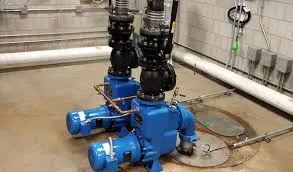Sundanese
- Afrikaans
- Albanian
- Amharic
- Arabic
- Armenian
- Azerbaijani
- Basque
- Belarusian
- Bengali
- Bosnian
- Bulgarian
- Catalan
- Cebuano
- Corsican
- Croatian
- Czech
- Danish
- Dutch
- English
- Esperanto
- Estonian
- Finnish
- French
- Frisian
- Galician
- Georgian
- German
- Greek
- Gujarati
- Haitian Creole
- hausa
- hawaiian
- Hebrew
- Hindi
- Miao
- Hungarian
- Icelandic
- igbo
- Indonesian
- irish
- Italian
- Japanese
- Javanese
- Kannada
- kazakh
- Khmer
- Rwandese
- Korean
- Kurdish
- Kyrgyz
- Lao
- Latin
- Latvian
- Lithuanian
- Luxembourgish
- Macedonian
- Malgashi
- Malay
- Malayalam
- Maltese
- Maori
- Marathi
- Mongolian
- Myanmar
- Nepali
- Norwegian
- Norwegian
- Occitan
- Pashto
- Persian
- Polish
- Portuguese
- Punjabi
- Romanian
- Russian
- Samoan
- Scottish Gaelic
- Serbian
- Sesotho
- Shona
- Sindhi
- Sinhala
- Slovak
- Slovenian
- Somali
- Spanish
- Sundanese
- Swahili
- Swedish
- Tagalog
- Tajik
- Tamil
- Tatar
- Telugu
- Thai
- Turkish
- Turkmen
- Ukrainian
- Urdu
- Uighur
- Uzbek
- Vietnamese
- Welsh
- Bantu
- Yiddish
- Yoruba
- Zulu
Telephone: +86 13120555503
Email: frank@cypump.com
Nov . 11, 2024 13:16 Back to list
submersible mixed-flow pumps an in-depth overview and ...
An In-Depth Overview of Submersible Mixed-Flow Pumps
Submersible mixed-flow pumps are specialized hydraulic devices designed to operate underwater, primarily for moving liquids in various industrial, municipal, and agricultural applications. Unlike conventional pumps that are located above the water surface, submersible pumps are installed below the fluid level, ensuring efficient operation by using the hydrostatic pressure to assist in fluid movement.
Design and Functionality
The architecture of a submersible mixed-flow pump is distinctive and complex. It typically features a motor that is hermetically sealed to prevent moisture ingress, an impeller that pumps fluid through the mixed-flow mechanism, and a volute or diffuser that helps channel the fluid efficiently. The mixed-flow impeller is a hybrid design that imparts both axial and radial flow to the liquid, thus allowing it to handle varying volumes and pressures in a single arrangement.
When activated, the motor drives the impeller, generating vortices that draw in fluid from the surroundings. This design is particularly beneficial for applications with high flow rates and moderate heads, making it ideal for wastewater management, dewatering, and irrigation.
Advantages of Submersible Mixed-Flow Pumps
1. Space-Efficient Since submersible pumps are installed below the water surface, they save above-ground space, making them a practical choice for applications with limited space.
2. Reduced Noise Levels The underwater operation significantly lowers noise pollution, making them suitable for residential and urban applications where noise is a concern.
4. Versatility Submersible mixed-flow pumps are versatile and can handle different types of fluids, including clean water, sewage, and slurries. This adaptability makes them valuable in various sectors such as agriculture, mining, and municipal services.
submersible mixed-flow pumps an in-depth overview and ...

5. Self-Priming Functionality Being submerged, these pumps do not require priming. They are able to start pumping fluids immediately, which is a critical factor in emergency drainage situations.
Applications
Submersible mixed-flow pumps find applications across various industries. In municipal operations, they play a crucial role in wastewater treatment plants where they help in moving sewage from collection points to treatment facilities. In agriculture, farmers utilize these pumps for irrigation systems, ensuring sufficient water supply for crops.
Additionally, in mining operations, they are employed to dewater pits and tunnels, preventing flooding and ensuring operational safety. They are also commonly used in construction sites for dewatering purposes, allowing for a safe and dry working environment.
Maintenance and Considerations
Although submersible mixed-flow pumps are robust and designed for harsh environments, regular maintenance is essential to ensure longevity and performance. Key maintenance tasks include checking the motor for wear and tear, inspecting seals for leaks, and cleaning the impeller to prevent clogging.
When selecting a submersible mixed-flow pump, it is crucial to consider factors such as the specific application requirements, fluid properties, and the overall system design. Choosing the right pump can significantly impact operational efficiency and longevity.
Conclusion
Submersible mixed-flow pumps represent an innovative solution for a wide array of pumping requirements. Their unique design, efficiency, and versatility have made them integral to modern industrial processes. As technology continues to evolve, these pumps are likely to see further enhancements, driving improvements in fluid management strategies across various sectors. Investing in the right submersible mixed-flow pump can lead to improved operational performance, reduced costs, and increased sustainability in fluid handling practices.
-
Horizontal Split Case Pump with GPT-4 Turbo | High Efficiency
NewsAug.01,2025
-
ISG Series Pipeline Pump - Chi Yuan Pumps | High Efficiency, Durable Design
NewsAug.01,2025
-
Advanced Flue Gas Desulfurization Pump with GPT-4 Turbo | Durable & Efficient
NewsJul.31,2025
-
ISG Series Vertical Pipeline Pump - Chi Yuan Pumps | Advanced Hydraulic Design&Durable Construction
NewsJul.31,2025
-
ISG Series Vertical Pipeline Pump - Chi Yuan Pumps | Energy Efficient & Low Noise
NewsJul.31,2025
-
pipeline pump - Chi Yuan Pumps Co., LTD.|High Efficiency&Low Noise
NewsJul.31,2025










